2018 - We Welcome You!

Photo Courtesy Vincent Nicolosi
Happy New Year! We wish you all happiness and health for the upcoming year! We’d like to thank you for making 2017 a wonderful year and welcoming us into the SF community! Help us begin the year by welcoming the newest member of our team, Michael, who will be our Ecological Restoration and Volunteer Management Academic Intern.
T.S. Eliot once wrote, “Every moment is a fresh beginning,” so let’s make every moment in 2018 count!
Announcements
Want to become a long-term Steward at Lands End? Read on!
If you love being outside, are interested in
habitat restoration, and want to make a positive impact in your national park, we encourage you to sign up for
our new Lands Ends Volunteer Steward Program!
This volunteer opportunity
is different than our drop-in programs. Volunteers will be trained and be a part
of the greater
National Park Service Volunteer-In-Parks Programs. For more information, and to
fill out the application, please click here.
Events
For a complete list of upcoming events please visit the Presidio Trust and Parks
Conservancy events
homepages!
EXCLUSION:
The Presidio’s Role in World War II Japanese American Incarceration
Tuesday–Sunday,
10 am–5 pm; through March 2018
Visit the
Presidio Officers’ Club for an exhibit detailing the Presidio’s role in the incarceration
of 120,000 Japanese Americans during World War II. What led to these dark
events? What have we learned and how does this shed light on the current issues
of mass incarceration, immigration reform, and racial profiling? For more
information, please click the link.
January
14, 2–3:30 pm: Buffalo Soldier: Gone but Not Forgotten
Join Ranger Alejandra Iraheta on a historic walk through
the National Cemetery, to Lombard Gate and concluding at the Presidio Visitor
Center. Learn about the triumphs and tribulations of African American “Buffalo
Soldiers” during a time of extreme racism and prejudice. Meet the ranger at the
entrance to the National Cemetery; reservations required, please call (415) 561-4323.
January 15,
time and locations vary: MLK Day of
Service 2018
Join family and friends at various locations throughout San Mateo,
Marin, and San Francisco counties on this annual day of service. Rain or shine.
For full list of locations and times click the link.
January 21, 11:15 am–12:15 pm: Ohlone: Past and Present
Ranger Desiree leads a two-mile hike and
shares stories of her Ohlone ancestors, as well as how Ohlone people continue
to use the park today.
Learn all the
benefits of leaving leaves on the ground! Click the link for more information!
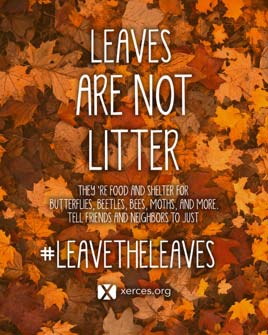
December Wildlife
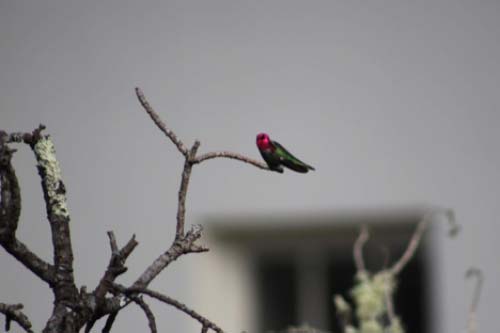
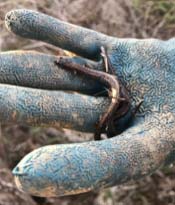 
Photos Courtesy Aurora Perez & Vincent Nicolosi
Welcome, Michael!
Ecological Restoration and Volunteer Management Intern
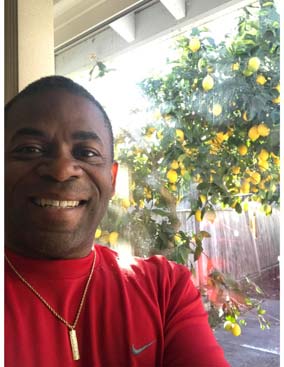
Growing up in South Florida, I have always had a love of and fascination with nature. It wasn’t hard for me to decide to seek a career in the environmental field. I am currently a senior college student attending San Francisco State University majoring in Environmental Studies. I’m excited about being a part of the team at the Parks Conservancy. I aspire to learn more about stewardship and getting others engaged and involved in nature.
Hawk Hill & Bird Watching
By Vincent Nicolosi
Ecological Restoration and Volunteer Management Intern
Hawk Hill,
located in the Marin Headlands, is home to the Golden Gate Raptor Observatory,
a Golden Gate National Parks Conservancy program (in cooperation with the
National Park Service) that monitors the annual fall migration of thousands of
hawks, falcons, eagles, and vultures—known collectively as raptors.1
The fall
observation season, which began in August, concluded last month. Each fall, as
birds migrate before the winter, a dedicated team of hawk-watching volunteers
ascends Hawk Hill every day for 3½ months (including holidays!) to monitor the
birds that pass through. This year, volunteers spent over 470 hours atop Hawk
Hill, diligently counting over 24,000 raptors!2
The data
collected can be compared to the previous 30 years of observations and allows
for a better understanding of migratory trends. By collecting and understanding
data the Golden Gate Raptor Observatory aims to “inspire the preservation of
California’s raptor populations.”1
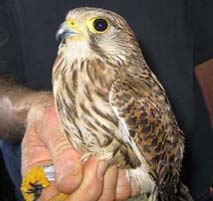
|
|
Eurasian Kestrel- Photo Credit Mike Armer4
|
During the observation season the
GGRO posts the daily hawk count on their blog. This past season hawkwatchers
spotted over 9,000 Red-tailed Hawks, 7,000 Turkey Vultures, and 3,000
Sharp-shinned Hawks.2
Some of the
rarer raptors included the Swainson's Hawk (13 sightings), Prairie Falcon (6
sightings), and the Rough-legged Hawk (1 sighting). 2 The Golden Gate Raptor Observatory has
a history of spotting many rare birds. Perhaps the rarest find came back in
2007, when a Eurasian Kestrel was caught and banded—the first recorded in
California history!4
Although the
migration season has passed, you will still see plenty of birds throughout the
Golden Gate National Recreation Area. Red-tailed hawks are year-round
residents, as are the charismatic Ravens. In fact, the winter season is when
you will see the most birds!3 At our very own Lands End, more than
200 species of birds have been spotted over the years! 3
On the city
streets, or in the Marin Headlands, birdwatching can be enjoyed anywhere! For
those who want to delve deeper into the birdwatching world, the Golden Gate
Raptor Observatory has binocular recommendations that can be seen here.
Interested in becoming a hawkwatcher?
The Golden Gate Raptor Observatory recruits new volunteers in the spring, with
trainings beginning in July ahead of the August–December observation season.
For more information on becoming a hawkwatcher, click the link.
For more
information on Golden Gate Raptor Observatory history, reports, and resources,
visit their homepage by clicking the link.
Until then, we
hope to see you in the field enjoying nature, and spotting all the diverse
birds that call the Golden Gate National Recreation Area home!
Banana Slugs are Bananas: B-A-N-A-N-A-S-L-U-G
By Aurora Perez
Ecological Restoration and Volunteer Management Intern
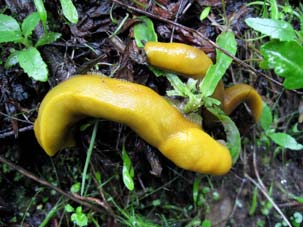 |
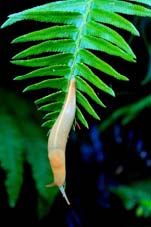 |
| Photo Courtesy
Bradley Allen(left) & Msuneson (right)/Wikimedia Commons
|
As we welcome the
New Year, we also welcome the wettest month of the year: January. Not only is
rain an essential factor for the success of all of our newly planted baby
plants, it also brings old friends—the banana slugs.
Banana slugs
respire through their skin, and have to be moist for the gas exchange to occur.
Because of this, they are limited to moist habitats, and often shelter among
forest debris and under logs.1
I saw my first
slug while working in Lobos Creek in late October. A friendly volunteer told me
that if I wanted to have good luck, I had to kiss the banana slug. I’m not admitting
anything, but I will say I’ve been one lucky gal ever since then.
Banana slugs are
commonly seen throughout all of our parks. I often spot them in the Golden Gate
Overlook forest and while I walk home through the Presidio.
In fact, banana
slugs are the second-largest slugs in the world. They are believed to have
evolved from marine snails that once had a protective large shell. They belong
to the same family of animals, called gastropods. They have a large muscular
foot, a dorsal mantle, and two pairs of tentacles—all of which help the slug
navigate and move along its paths.2
These critters are
often referred to as nature's giant recycler. They will eat animal droppings,
leaves, and other debris on the forest floor and generate waste that fertilizes
new plants!
Another very
impressive characteristic of the banana slug is their slime. The slime helps
keep the slug moist for gas exchange during respiration; it has fascinating
lubricant and adhesive properties, and is the slug’s main defensive system. The
slime contains chemicals that numb the tongue of any animal that attempts to
eat it.2
Mating rituals
vary within the three species of banana slugs, but some species spend over four
hours in the process of courtship and repeated fertilization. In order to
attract mates, banana slugs will release a pheromone in the slime they leave
behind.
They have both
male and female organs and use them both during copulation.1 At
the end of their mating ritual the couple of banana slugs will be left in a
puddle of slime, which they will then eat.2
Banana slugs are
fascinating critters. Make sure to keep an eye out for them during your next
adventure in nature.
Drop-In Volunteer Programs
|
Volunteer on Thursdays:
Presidio Coastal Bluffs, 1–4 pm
January 4, 11, 18
Lobos Creek: January 25
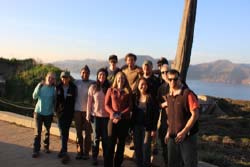
|
Volunteer on Saturdays:
Lands End, 1–4 pm
January
6, 20, 27
Cancellations: January 13
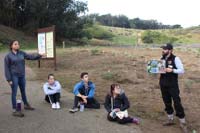
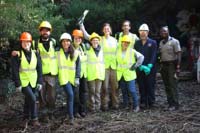
Photos Courtesy Yakuta
Poonawalla
|
|
Click here to find our volunteer work day schedule.
See you in the field! HAPPY NEW YEAR!
|

|